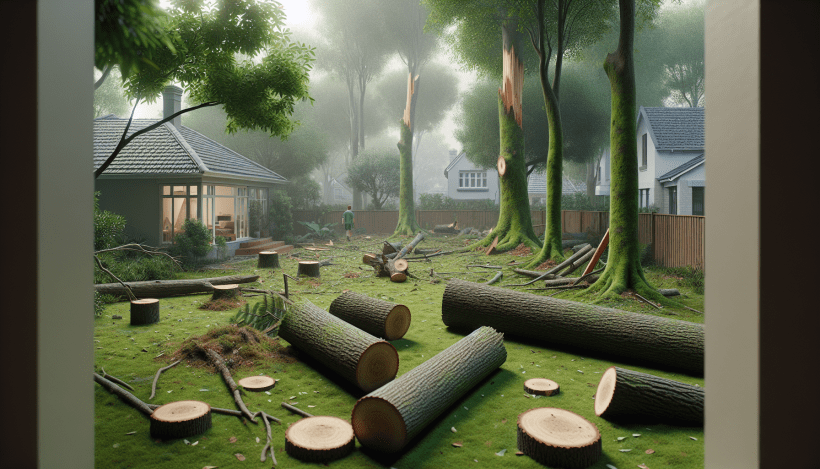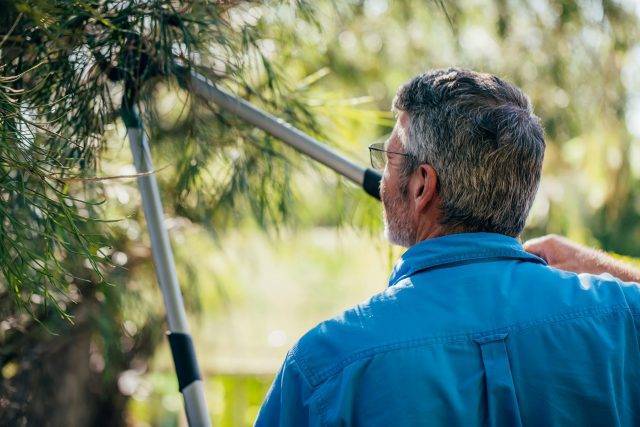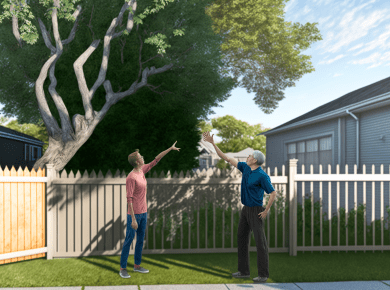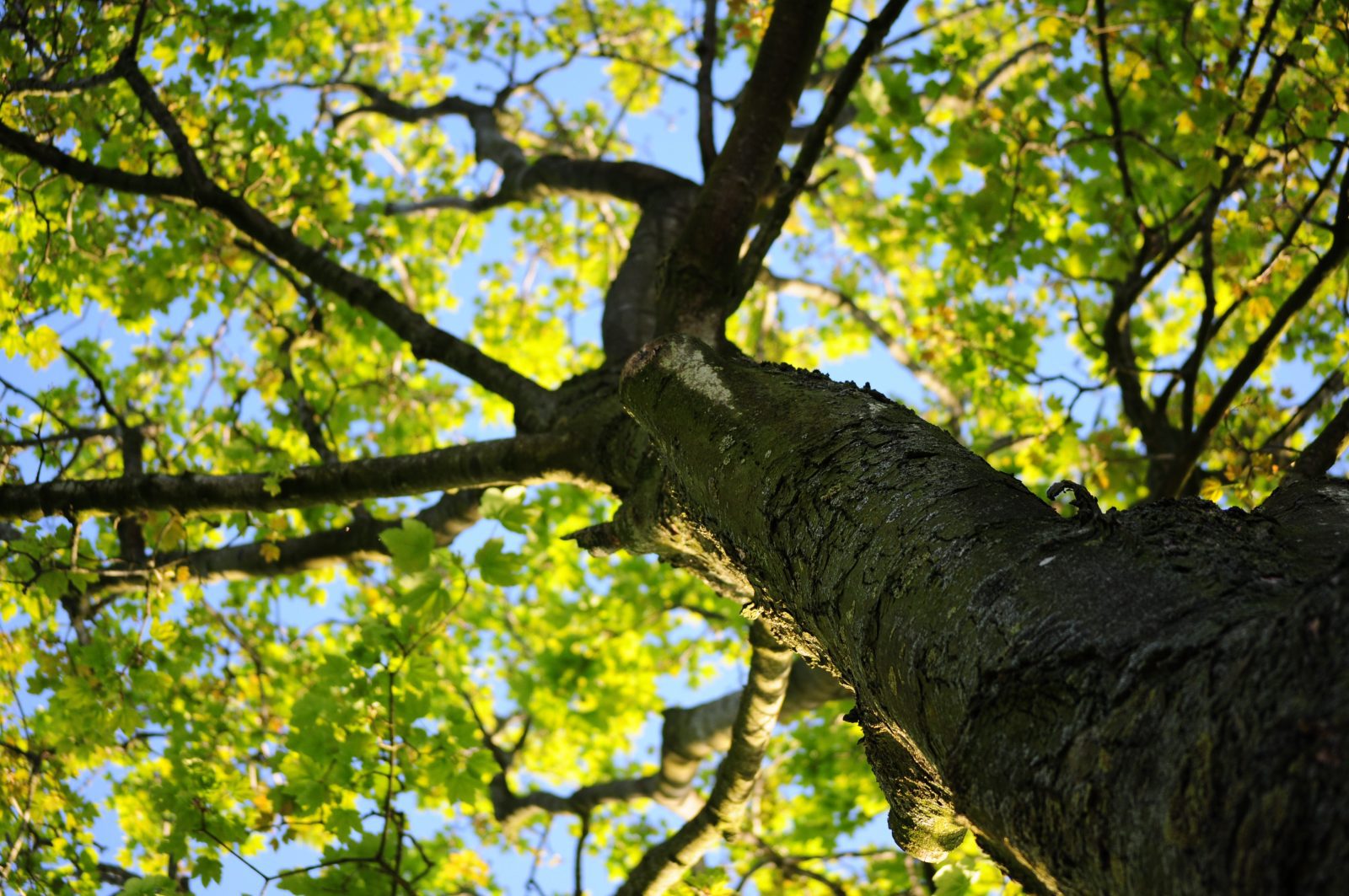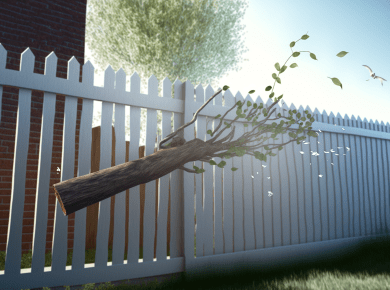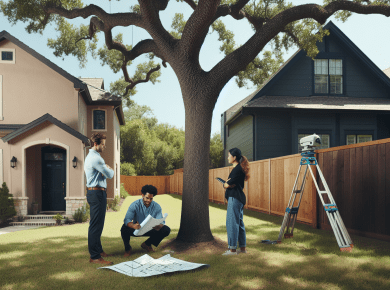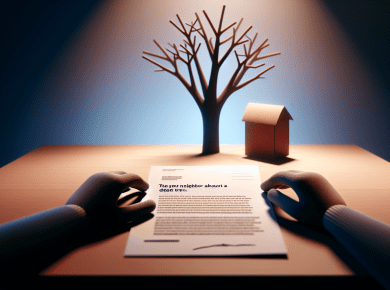Understanding Property Lines
Understanding property lines is essential when dealing with neighborhood disputes, particularly those involving trees. Property lines define ownership and help avoid conflicts by clarifying where one person’s property ends and another’s begins.
Importance of Property Boundaries
Property boundaries play a critical role in property ownership. They not only define the limits of a property but also influence how individuals can use their land. According to This Old House, knowledge of property lines helps homeowners make informed decisions regarding landscaping, building permits, and maintenance tasks.
| Aspect | Description |
|---|---|
| Land Usage | Determines what can be built, how property can be maintained. |
| Property Value | Clearly defined boundaries can enhance property value. |
| Legal Rights | Helps protect property rights and provides a basis for legal action if necessary. |
Impact on Property Use
In instances where trees are involved, the location of property lines can become a source of significant tension, especially when a neighbor has cut down trees on another’s property. If a tree is deemed to encroach upon a property line, the owner of that tree must adhere to local laws about trimming or removal. In many places, trees that cross property lines can lead to disputes about who is responsible for maintenance and damage.
It’s essential for homeowners to recognize that tree ownership and responsibility can vary by state laws. Individuals may find themselves with legal rights concerning trees that exist partially over property lines, potentially altering the way disputes about tree removal are handled. If a neighbor cut down trees on one’s property without permission, this could lead to legal repercussions, including potential fines or damages (Ohio Farm Bureau).
Understanding the nuances of property lines can help mitigate conflicts. Homeowners are encouraged to communicate with their neighbors about shared concerns regarding trees and other encroachments, aiming for amicable solutions that respect property boundaries. For guidance in addressing such encroachments, individuals can refer to resources like sample encroachment letters and relevant legal frameworks.
Resolving Disputes Amicably
Addressing disputes with neighbors, especially concerning property issues like a neighbor cutting down trees on private property, requires a thoughtful approach to achieve resolution without escalating conflict.
Mediation as a Conflict Resolution Tool
Mediation is often recommended as a practical way to resolve neighbor disputes, including those involving the removal of trees. This method allows both parties to communicate openly with a neutral third party who facilitates the discussion. By using mediation, individuals can avoid the bureaucratic, time-consuming, and expensive nature of litigation. Such disputes can significantly damage relationships, making mediation a preferred alternative to legal action (Nolo).
Even if one party feels aggrieved, seeking a compromise through mediation can provide a structured way to address issues, explore solutions, and foster understanding between parties involved. Mediation helps ensure that everyone’s voice is heard, potentially leading to a more amicable agreement that maintains neighborly relations.
Benefits of Compromise
Compromise is a vital element of conflict resolution. Even when individuals cannot afford formal mediation services, they can engage in informal conflict resolution methods. Initiating direct discussions with the neighbor can prove beneficial. This approach encourages both parties to communicate, identify underlying issues, and work toward mutually beneficial agreements (Nolo).
Civil dialogue, whether facilitated by a mediator or conducted directly, often leads to effective resolutions without resorting to legal intervention. It is advisable to exhaust informal options before considering litigation. By prioritizing conversation and understanding, neighbors can resolve disputes related to property damage or tree removal while fostering a positive living environment.
For further guidance on effectively communicating with a neighbor about tree-related issues, consider using resources like a sample letter to neighbor about tree removal or a tree trimming request letter to neighbor.
Mediation Settlement Agreements
Mediation can be an effective way to resolve disputes related to property concerns, such as when a neighbor has cut down trees on one’s property. A structured approach to mediation can lead to a fair settlement agreement that addresses the interests of both parties involved.
Components of a Strong Agreement
A robust mediation settlement agreement should be well-structured and clearly defined. It must include the following components to ensure it is effective:
| Component | Description |
|---|---|
| Clarity | Use simple and straightforward language to avoid misinterpretations. |
| Specificity | Detail the actions to be taken, responsibilities of each party, and timelines. |
| Flexibility | Allow for adjustments if unforeseen circumstances arise. |
| Future Dispute Clause | Include provisions for addressing potential future disputes should they arise. |
| Signatures and Date | Ensure all parties sign and date the agreement to confirm their consent and commitment. |
According to Nolo, it is vital for both parties to understand and agree to the terms laid out in the settlement.
Ensuring Adherence to Terms
Once a mediation settlement agreement is created, ensuring adherence to its terms is essential. If one party violates the agreement, several steps can be taken:
Direct Communication: The first step is to address the issue directly with the neighbor. Open dialogue can often resolve misunderstandings.
Revisit Mediation: It may be beneficial to involve the original mediator again to revisit the terms and address any noncompliance issues.
Involve Third Parties: If direct communication does not work, involving an impartial third party or local neighborhood association can provide additional support in resolving the issue.
Legal Action: Depending on the severity of the violation, you may consider legal avenues such as filing a complaint with local authorities, involving law enforcement, or pursuing the matter in small claims court (Nolo).
Understanding the components of a strong agreement and knowing how to enforce its terms is critical for neighbors trying to navigate disputes like “neighbor cut down my trees.” For further insights into addressing neighbor disputes, individuals can explore topics like who is responsible for cutting overhanging tree branches or what to do if a neighbor cuts down trees on your property.
Dealing with Noncompliance
Addressing the situation when a neighbor has cut down trees on one’s property can often lead to challenges. Noncompliance with any agreements or understandings can exacerbate the tension between neighbors. In this section, strategies for addressing violations and possible legal recourse will be explored.
Addressing Violations
In the event that a neighbor cuts down trees on one’s property in violation of property boundaries, the initial step is to communicate directly with the neighbor about the issue. This approach allows both parties to discuss the situation in a civil manner, which can simplify resolution efforts. In many cases, understanding and dialogue help to address concerns without escalating the matter further.
If direct communication fails, revisiting mediation with the same mediator can be beneficial. Mediation offers a structured approach to address disputes, even if the neighbor is at fault Nolo. Additionally, a robust agreement reached in mediation should always be clear, specific, and adaptable to unforeseen circumstances, ensuring both parties understand and adhere to its terms.
Legal Avenues for Resolution
When informal communication and mediation do not yield results, legal options may become necessary. The following avenues can be explored:
| Legal Avenue | Description |
|---|---|
| Small Claims Court | Filing a claim for damages caused by the unlawful removal of trees. This is typically suitable for minor disputes. |
| Neighborhood Association | Complaining to the local homeowners’ association if the trees’ removal violates community rules or guidelines. |
| Law Enforcement | Involving police if there is a concern regarding harassment or dangerous behavior. This may be necessary if the situation escalates. |
| Civil Action | Pursuing potential lawsuits if significant damages have occurred or if other remedies are unavailable. Details about specific cases can be referred to in legal sources such as can you sue someone for cutting down trees on your property. |
Exhausting formal options is usually recommended before proceeding to litigation, as court actions can be time-consuming and costly FindLaw. Prioritize communication and mediation strategies to resolve disputes amicably whenever possible. It is often wise to be patient, allowing time for a neighbor to realize the impact and take corrective action.
Informal Conflict Resolution Methods
Engaging in informal conflict resolution methods can often be an effective way for neighbors to handle disputes regarding property issues, such as when a neighbor cuts down trees on your property. This approach emphasizes communication and mutual understanding rather than escalating the situation to legal channels.
Direct Communication
Direct communication involves having open and honest discussions with the neighbor involved in the dispute. It is essential for both parties to express their concerns without resorting to confrontation. Approaching the conversation with a calm demeanor can lead to more productive outcomes.
Here are some tips for effective direct communication:
| Tips for Direct Communication | Description |
|---|---|
| Choose the Right Time | Find a time when both parties are calm and free from distractions. |
| Be Clear and Concise | Present your concerns clearly to avoid misunderstandings. |
| Listen Actively | Allow the neighbor to express their side of the story without interruptions. |
| Stay Respectful | Keep the conversation civil, focusing on resolving issues rather than assigning blame. |
For neighbors considering this approach, it can help to prepare points ahead of time or even write down specific examples of the issue. If necessary, referring to a letter to neighbor about tree may assist in structuring the discussion.
Achieving Mutual Agreements
Reaching a mutual agreement is often the ultimate goal of informal conflict resolution. This involves both parties identifying their needs and finding a compromise that works for everyone involved.
To facilitate mutual agreements, consider the following steps:
Identify Common Goals: Discuss what both parties hope to achieve, which may include property damage reduction or landscaping improvements.
Propose Solutions: Each party can suggest possible solutions. This collaborative approach can lead to creative ideas that satisfy both parties.
Document the Agreement: Once an agreement is reached, it’s beneficial to write it down. This provides clarity and serves as a reference point for both parties.
Follow Up: Schedule a follow-up conversation to assess the effectiveness of the agreement and make adjustments if necessary.
Utilizing these informal methods can prevent further escalation and potentially harmful legal disputes. If the situation does not improve, it may be necessary to explore more formal options, as discussed in other sections like legal recourse and authorities.
Engaging in direct communication and working towards mutual agreements allows for a neighborly resolution to property disputes, such as when a neighbor has cut down trees on your property.
In the event of property disputes, particularly when a neighbor cuts down trees on your property, individuals may need to consider legal recourse and the authorities available to help address the issue. Two key avenues include involving law enforcement and understanding the role of homeowners associations (HOAs).
Involving Law Enforcement
When a neighbor engages in behavior that compromises property rights or leads to harassment, contacting law enforcement may become necessary. If the situation escalates to illegal activity, she or he should not hesitate to notify the police. However, it is often advisable to first consult with the homeowners association, property management company, or landlord in order to resolve annoying behaviors before involving authorities (FindLaw).
Engaging law enforcement can be a pivotal step if the actions taken by the neighbor are damaging or represent a violation of local regulations. This can be especially important if the tree removal has resulted in structural damage or potential hazards on your property.
Role of Homeowners Associations
Homeowners associations play a significant role in managing disputes and maintaining community standards. They typically have established policies to address common issues such as noise disturbances, pet regulations, and even landscaping disputes that could affect property values. If trees have been cut down inappropriately or if a neighbor’s actions violate the HOA’s bylaws, the association may step in to mediate the situation (FindLaw).
It is beneficial for residents to familiarize themselves with their HOA’s regulations, as these can provide clear guidance on what actions can be taken against a neighbor who has cut down trees or engaged in other property-damaging behavior. The HOA can help enforce these rules, which may include issuing fines or requiring restoration of the property to its original state.
Ultimately, utilizing legal avenues and involving appropriate authorities can help resolve disputes effectively, ensuring both property rights and neighborhood harmony are upheld. For guidance on specific legal actions, individuals may also benefit from consulting resources related to cutting trees down without permission or the processes involved in filing complaints with homeowners associations.
